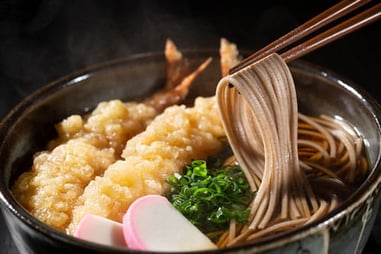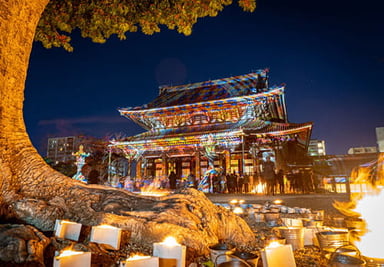December 31, the final day of the year, is often associated with a clock countdown and a ball drop here in the United States. But the new year is welcomed in and celebrated in many ways worldwide. In Japan, they celebrated Ōmisoka.
To usher in the new year feeling fresh, it begins with families cleaning their houses and preparing for the New Year holidays. Kids are in the middle of winter break and usually help with the chores. College students and professionals who moved to big cities to attend school or take on a job return to their hometowns to spend Ōmisoka with their friends and relatives.
On the eve of the new year, many families gather around the TV set to watch special Ōmisoka programs and eat toshi-koshi buckwheat noodles, hoping that one's life will be stretched out as long as the noodles.

As midnight approaches, Buddhist temples around the country begin ringing out the old year, striking their temple bells 108 times. This practice is based on a belief that humans have 108 earthly passions to overcome to attain enlightenment, and each ring is thought to drive away one such passion. People wait until the reverberations have entirely died down from each bell toll before making the next strike, and this celebration takes about an hour to complete the 108 strokes.

The tolling of the bell at some of the nation's most famous temples is broadcast live on television and radio. Many people welcome the new year by listening to the calming sounds.
The breaking of dawn the next morning is much more than just the beginning of a new day. Oshogatsu (the first three days of the year) is Japan's biggest holiday, and people flock to temples and shrines to pray for a healthy and prosperous year. This visit is called hatsumode, which used to mean going to a Shinto shrine before dawn and paying respects to one's guardian deities as dawn broke. Today, though, a visit between January 1 and January 7 is considered part of hatsumode, and it remains an essential and time-honored custom for receiving the new year, connecting with the divine, and praying for fortune.
Happy Ōmisoka those who celebrate!





Leave a Comment